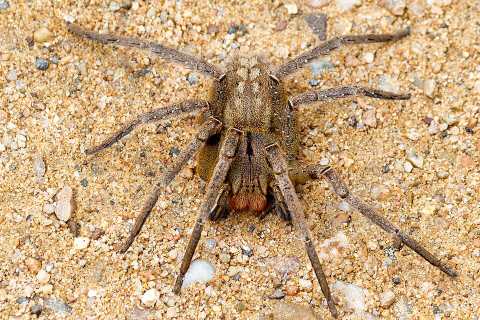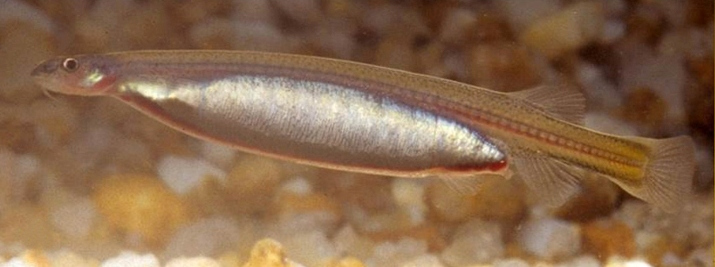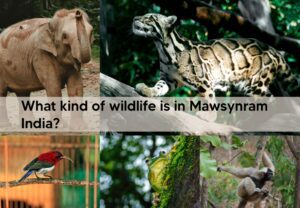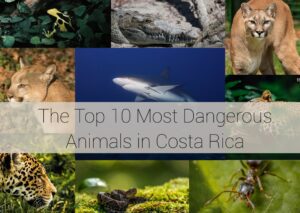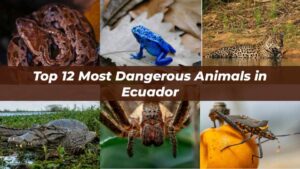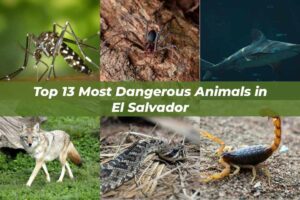The Amazon rainforest is one of the many places on earth that is home to a diverse population of wildlife. The rainforest, which is also known as the Amazon jungle or Amazonia, covers most of South America.
Just like many other forests and places on earth, the Amazon rainforest is home to apex predators that are venomous, poisonous, or possess some traits that make them dangerous.
In this article, we will uncover the top 20 most dangerous animals in the Amazon rainforest. You will learn why these animals are considered dangerous and other helpful information you may need.
Top 20 Most Dangerous Animals in the Amazon Rainforest
1. Jaguar
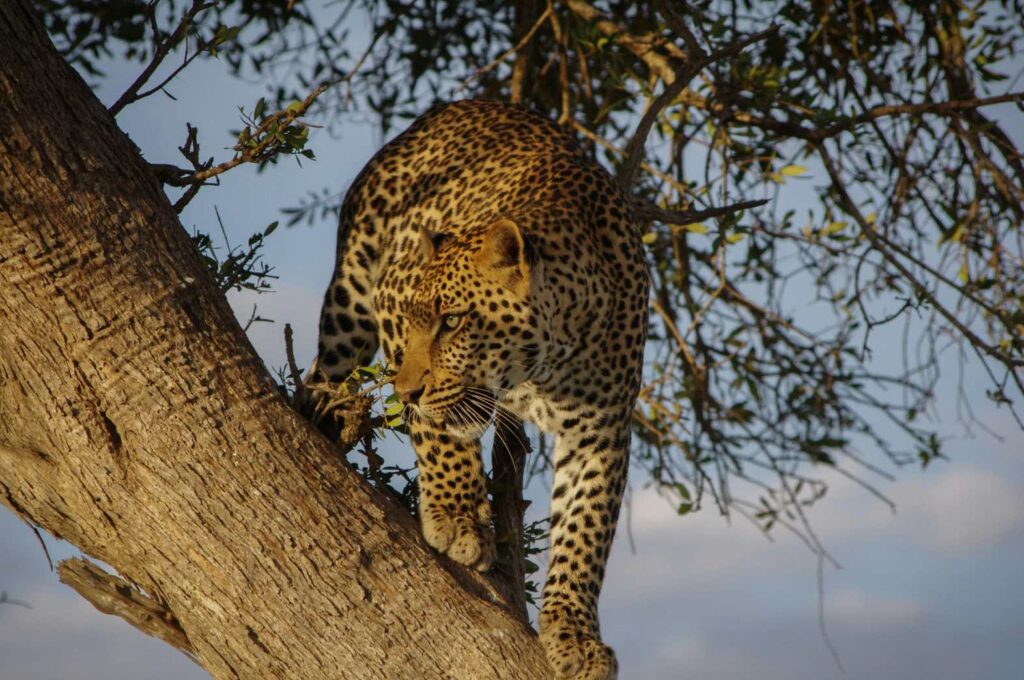
Scientific Name: Panthera onca
The Jaguar is a big cat with many abilities that make it a threat on land, in the water, and in trees. There is no escaping a determined Jaguar in the wild.
In case you might be wondering, Jaguars are the largest cat in the Americas and the third-largest in the world. The bite force of a jaguar is twice as strong as a lion’s, making it possible to hunt crocodiles and other tough animals.
Just think of animals with the hardest shells, like turtles and tortoises. These animals can easily be crushed with just a single bite of a hungry Jaguar.
In the Amazon region, attacks on humans are very rare, because jaguars are solitary and prefer to avoid confrontation. That said, they are also masters of camouflage, blending perfectly with the surroundings.
2. Green Anaconda
Scientific Name: Eunectes murinus
The Green Anaconda is one of the largest and heaviest snakes in the world, with a length of over 30 feet (9.1 m) and a weight of more than 550 pounds.
What makes the Green Anaconda dangerous is its ability to constrict prey and swallow whole animals. They can squeeze the life out of animals in the wild like capybaras, deer, green iguanas, turtles, caimans, and even jaguars.
Jaguars are powerful predators, but a Green Anaconda can still subdue them, especially in the water.
Green Anacondas are kings in the waters of the Amazon rivers and swamps. They are faster in the water than on land because of their huge size.
Note: The Green Anaconda is a non-venomous constrictor that can kill its prey by constriction.
3. Poison Dart Frog
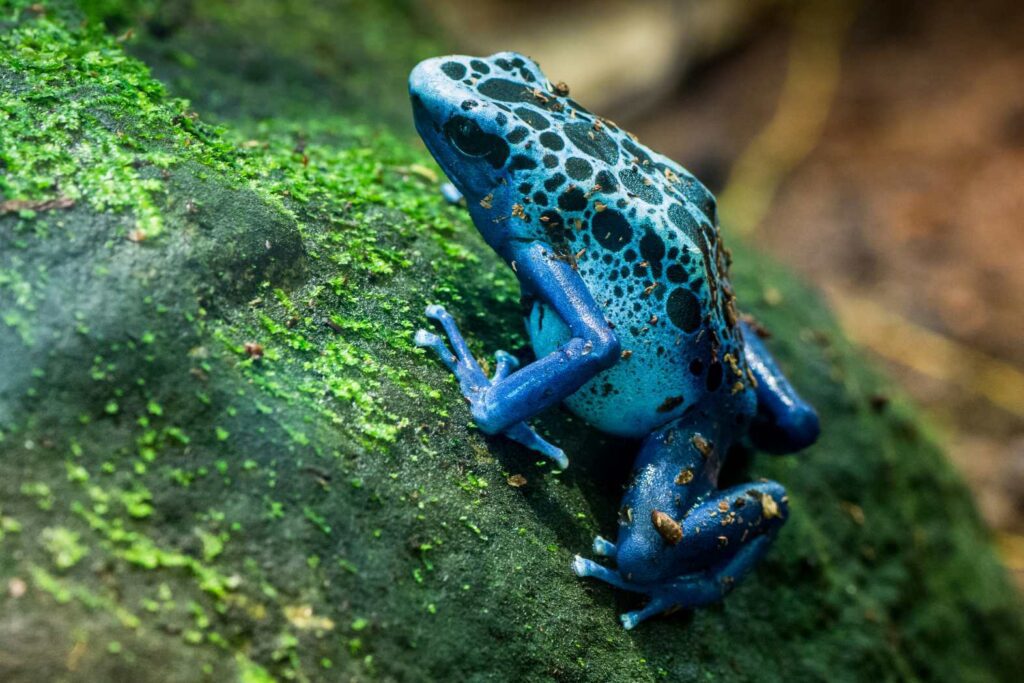
The Poison Dart Frog is a colourful little frog that has skin toxins that can paralyse or kill predators. These frogs come in different colours, from electric blue to fiery red.
Poison Dart Frogs are found throughout the Amazon rainforest, where they live in marshes, lakes, and swamps.
The golden poison dart frog has enough venom to kill ten adult humans. Indigenous communities in Central and South America have historically used this poison on the tips of their hunting darts, hence the name.
4. Black Caiman

Scientific Name: Melanosuchus niger
Black Caimans are another dangerous animal found in the Amazon rainforest. These crocodilian reptiles are apex predators that hunt animals that live along freshwater habitats like slow-moving rivers, lakes, and savannas.
The Black Caiman has powerful jaws that can take down wild pigs, monkeys, small animals, and even larger mammals. With a length of over 15 feet, these massive crocodilians are the largest predators in the Amazon basin.
Their dark appearance makes it easy for them. But to camouflage in the waters and attack unsuspecting prey.
5. Brazilian Wandering Spider
Brazilian Wandering Spiders are also known as Phoneutria or banana spiders because they hide in banana shipments.
In the Amazon region where they reside, they wander the jungle floor at night and hide inside termite mounds, under logs and rocks, and in banana plants during the day.
The Brazilian Wandering Spider is a venomous spider that can be dangerous to even humans. Symptoms of this spider bite include intense pain, inflammation, breathing difficulties, sweating, and elevated heart rate.
In rare cases, bites from the Brazilian Wandering Spider can be fatal if not treated with antivenom.
Although antivenom is now available, its bite can be very serious and extremely painful, making it one of the deadliest spiders in the Americas.
6. Fer-de-Lance (Terciopelo)
Scientific Name: Bothrops asper
This Fer-de-Lance is a species of venomous pit vipers that are found in the Amazon rainforest. They are among the largest vipers, reaching 8.2 feet in length.
Their venom makes them one of the most feared snakes in the Americas. A bite can cause severe tissue damage, and its aggressive nature and tendency to strike with little provocation make it dangerous.
Luckily, Fer-de-Lance snakes are nocturnal and solitary in nature, and they tend to avoid contact as much as possible.
To understand how the venom of the Fer-de-Lance is dangerous, picture the didelphine opossums that are normally immune to the venom of pit vipers and rattlesnakes succumbing to their venom.
They are known to camouflage perfectly among the leaf litter on the forest floor due to the brown and grey markings on their bodies.
7. Electric Eel
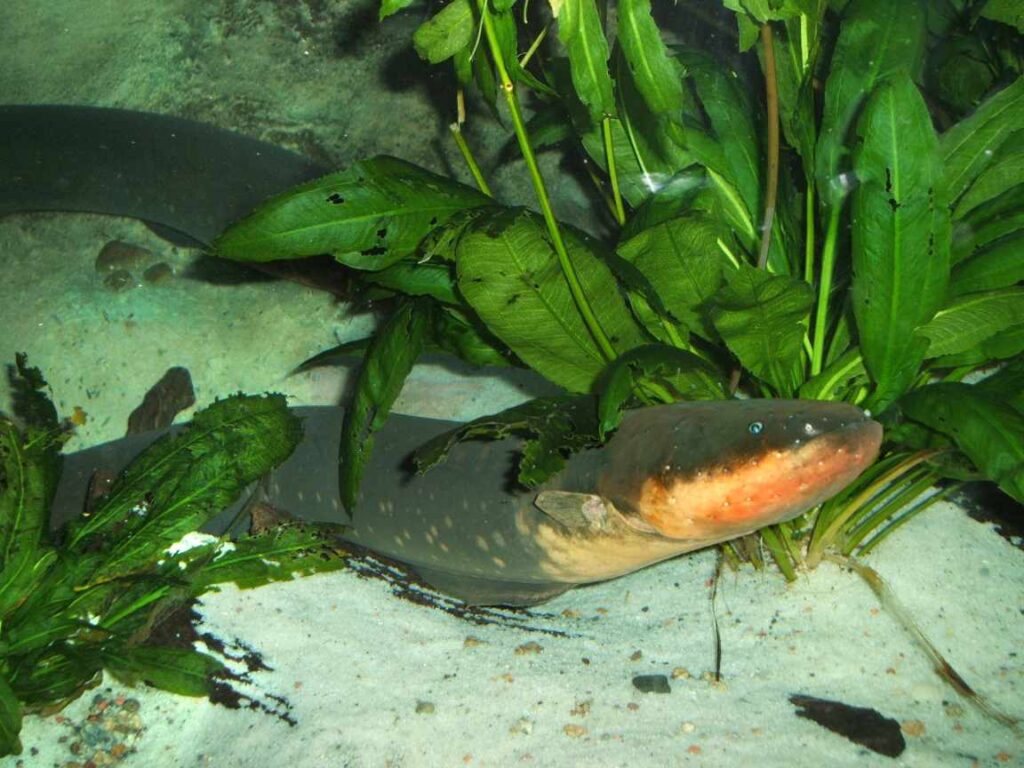
The Electric Eel is found throughout the rivers, lakes, and ponds in the Amazon. This freshwater fish is a type of knifefish and not a true eel.
Electric Eels can generate powerful electric shocks of up to 860 volts to stun prey and predators. A single shock is enough to take down some large predators in the water.
As for humans, it will take more than a single shock to become fatal. Repeated shocks can cause heart or respiratory failure, which can lead to drowning.
If you find yourself swimming in the Amazon rainforest, avoid these swimming power lines once you spot them.
8. Bullet Ant
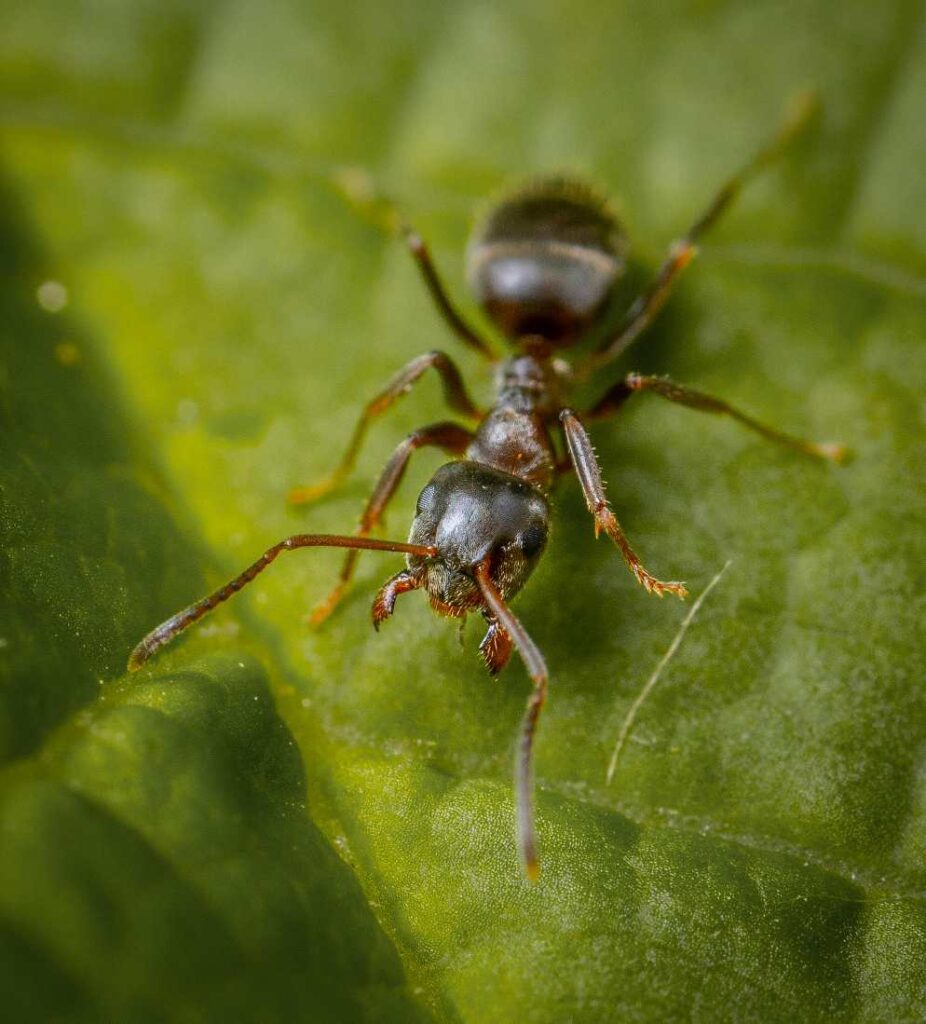
Scientific Name: Paraponera clavata
The sting from a Bullet Ant is so painful that it can be compared to being shot. Although ants are small, bullet ants are larger, reaching 1.2 inches long.
The pain from a Bullet Ant can last for up to 24 hours and is considered the most painful insect sting in the world.
If you will be exploring the jungle in the Amazon rainforest regions throughout Central and South America, make sure to wear sturdy boots and protective clothing.
Key Takeaways About The Bullet Ant
- The Bullet Ant has one of the most painful stings in the world, like a gunshot.
- It lives in rainforests of Central and South America and is very protective of its home.
- People call it the “24-hour ant” because the sting hurts for a whole day.
9. Piranha
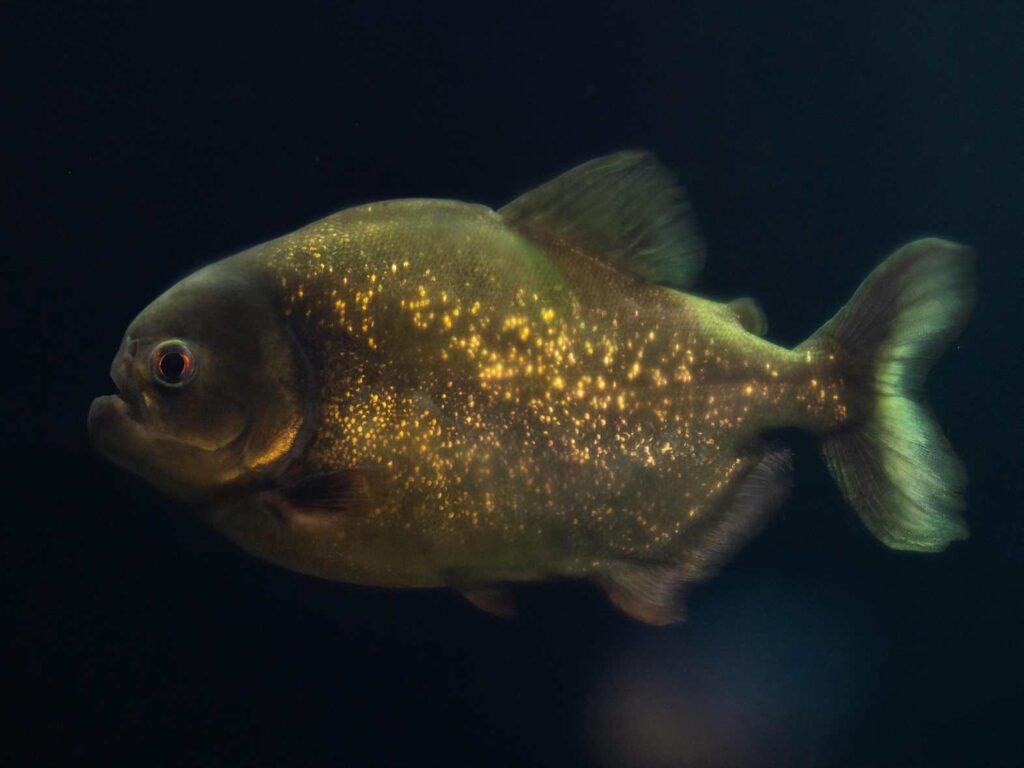
Piranhas are another dangerous freshwater fish that is indigenous to the Amazon basin. This fish has razor-sharp and interlocking teeth and powerful jaws.
Out of the 39 piranha species, 25 are from the Amazon. These creatures have one of the strongest bites found in bony fishes.
The black piranha has one of the most forceful bites among vertebrates, while the red-bellied piranha can be dangerous due to their ability to congregate in large schools, especially during the dry season when food is scarce.
10. Bull Shark
Scientific Name: Carcharhinus leucas
It is important to note that the Bull Shark can live in both salt and freshwater. These apex predators attack anything they perceive as prey in the water.
Bull Sharks are responsible for the majority of near-shore shark attacks in waters where they are found. This is due to their aggressive behaviour and keen sense of smell, which allow them to detect substances in the water.
11. Bushmaster
The South American bushmaster is another pit viper species that is found in the Amazon rainforest. They are the longest venomous snake in the Western Hemisphere, reaching lengths of over 12 feet.
The venom of a Bushmaster is so potent that even a bite from a juvenile specimen can be fatal to a human.
Their venom can cause internal bleeding, irregular heartbeat, low blood pressure, intense pain, and difficulty breathing.
Bushmaster snakes are nocturnal and live in remote areas, so encounters with humans are rare.
12. Coral Snake

The Coral Snake is one of the most dangerous snakes in the Amazon. Venomous coral snakes have a particular colouration that makes it hard to distinguish them from non-venomous mimics.
“Red on yellow, kill a fellow. Red on black, friend of Jack.” This rhyme is used to identify the venomous coral snake because the red and yellow/white bands on its body meet.
A bite from the coral snake can cause respiratory failure, causing the victim to stop breathing.
Coral Snakes are very elusive and are hardly seen in the open. They spend most of their time buried beneath the ground or in leaf litter. You are more likely to see them when it rains or during breeding season.
13. Amazonian Giant Centipede
Scientific Name: Scolopendra gigantea
The Amazonian Giant Centipede is the largest centipede species in the world, and it is found in the Amazon rainforest. They can grow to be more than 12 inches in length.
Amazonian Giant Centipedes have a very potent venom, which is injected into prey through their modified front legs. A bite from this giant is very painful for humans and can cause fever, chills, and weakness.
This creepy-crawly has no less than 46 legs and is very fast-moving. Their looks alone are enough to scare most people.
14. Harpy Eagle
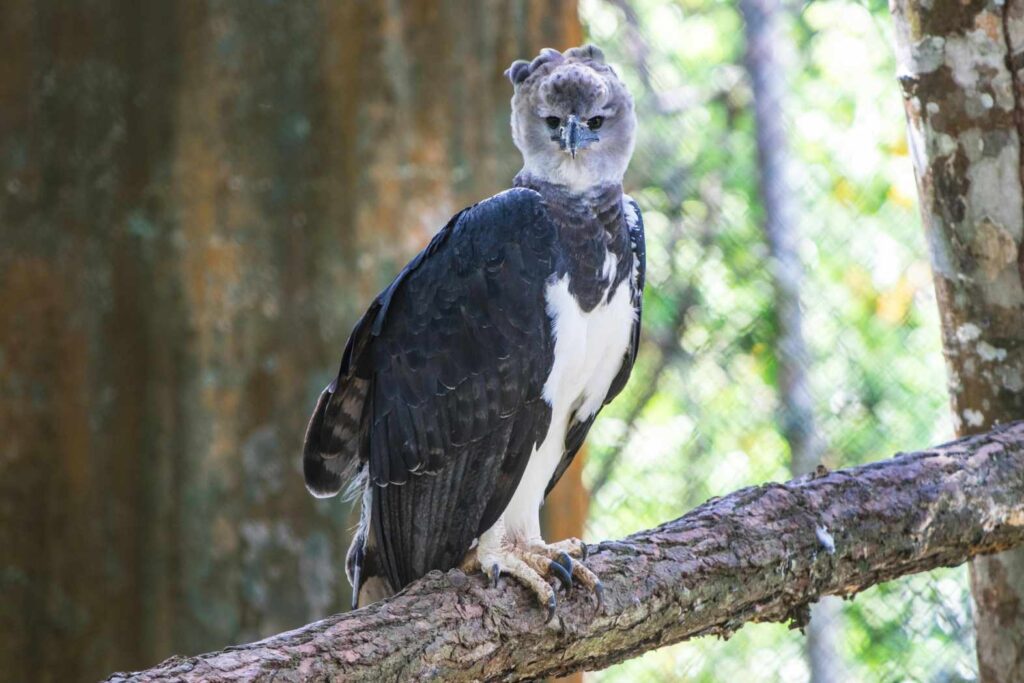
Scientific Name: Harpia harpyja
The Harpy Eagle is one of the largest eagle species in the world. With a wingspan of up to 6.5 feet and talons the size of grizzly bear claws, the Harpy Eagle is one of the world’s most powerful eagles.
They are able to seize and carry large prey like monkeys, sloths, and other large arboreal animals (animals that primarily live in trees).
Although Harpy Eagles might not pose a direct threat to humans, their sheer size and power make them an apex predator of the wilderness of the Amazon.
15. Assassin Bug (Kissing Bug)
The Assassin Bug or Kissing Bug is one of the many insects found in the Amazon rainforest. They are known to transmit Chagas disease, which is a life-threatening illness.
Assassin Bugs are mostly dangerous to other insects in the Amazon. They use the organ protruding from their mouths to inject poisonous saliva into their prey.
They are called “kissing bugs” because they often bite humans on the face near the lips.
16. Mosquito
You know this list of dangerous animals in the Amazon rainforest will not be complete without mentioning mosquitoes. These tiny flies share the same list with jaguars and anacondas.
Mosquitoes are responsible for many human illnesses and deaths in the Amazon region. They carry diseases like malaria, dengue fever, yellow fever, and Zika virus.
Due to the rivers in the Amazon rainforest, mosquitoes thrive because they lay their eggs on the water.
Many countries in the Amazon have a high population of mosquitoes. This is why it is always advisable to use a good insect repellent when visiting these regions.
17. Candiru (Vampire Fish)
The Candiru are tiny, parasitic catfish with the reputation for allegedly swimming into the urethra of humans. While documented cases are extremely rare and debated, the fear they inspire is very real.
They are found throughout the Amazon basin, where they bore into carrion and cadavers that drift downriver.
18. Payara (Vampire Fish)
Scientific Name: Hydrolycus scomberoides
The Payara fish is armed with two long, saber-like fangs protruding from its lower jaw. They use these teeth to prey on smaller fish, including piranhas.
Payaras are dangerous to other smaller fish in the Amazon rainforest.
19. Giant Otter
Scientific Name: Pteronura brasiliensis
The Giant Otter is a carnivorous mammal that lives in the Amazon rainforest. They are very territorial and can be aggressive if they feel their pups are threatened.
Giant Otter mostly eat fish, crabs, and small animals. Their sharp teeth and powerful bite can cause serious injuries when bitten.
Do not be fooled by their playful appearance; they are wild animals, and more importantly, they hunt in family groups.
20. Arapaima
The last animal on this list is the Arapaima, one of the largest freshwater fish in the world.
Arapaima can grow up to 10 feet long and weigh over 400 pounds, making them one of the largest carnivorous freshwater fish in the world.
Unlike many other animals, the Arapaima does not pose serious risks to humans. Locals residing in the Amazon, where they live, use them for different purposes like medicine and food.
Other Dangerous Plants in the Amazon Rainforest
As you may know, there are also different plants in the Amazon rainforest, and some of these plants can also be dangerous. Some Amazonian plants can be poisonous, like Strychnos and Curare, which are used to make poisonous arrows.
Other dangerous plants include stinging trees, manchineel trees, and cannonball trees.
The Cannonball Tree is not poisonous, but it has hard and heavy fruit similar to a coconut that can fall from heights of up to 35 meters. You do not want to be close when this fruit falls to the ground.
Conclusion
The Amazon Rainforest is home to a variety of wildlife that come in different shapes and sizes. From the smallest mosquito to the fierce Jaguar, the Amazon is one of the jungles where the strongest survive.
In this article, I have shared the Top 20 Most Dangerous Animals in the Amazon rainforest. At this point, you have learnt why these animals are dangerous and something you might not have known before.
In summary, the most dangerous animals in the Amazon are the Jaguar, Green Anaconda, Poison Dart Frog, Black Caiman, Brazilian Wandering Spider, Pit Vipers, and Aquatic Predators.
FAQs
Are there tigers in the Amazon?
There are no tigers in the Amazon rainforest. The Amazon jungle is large and full of prey for big cats, but tigers are not found here. Tigers are distributed across Southeast Asia, the Indian subcontinent, China, and Russia.
Is it safe to travel to the Amazon rainforest?
Yes, it is generally safe to travel to the Amazon, especially when you go with experienced guides. The best way to remain safe during your visit is to take precautions like listening to guides and preparing for the jungle.
What is the single most dangerous animal in the Amazon?
This is a tough question to answer, as “dangerous” can be defined in different ways. In terms of a direct, powerful threat, animals like the jaguar are the most dangerous animals in the Amazon rainforest.
How can I protect myself from insect bites in the Amazon?
To protect yourself from insect bites in the Amazon, wear long-sleeved shirts and long pants, preferably in light colours. Use a strong insect repellent containing DEET or picaridin on exposed skin. Sleep under a mosquito net, especially in rural areas.
Which animal is the king of the Amazon?
The Jaguar is the king of the Amazon jungle. It is the only big cat and large apex predator roaming the Amazon.

Hi, I’m Louis Ojibe, and I grew up around wildlife in Africa. I have always been fascinated by animals and nature across the world.
As a child, my parents used to take me to see wild animals like lions, elephants, gorillas, tortoises, and many others at our local zoo.


